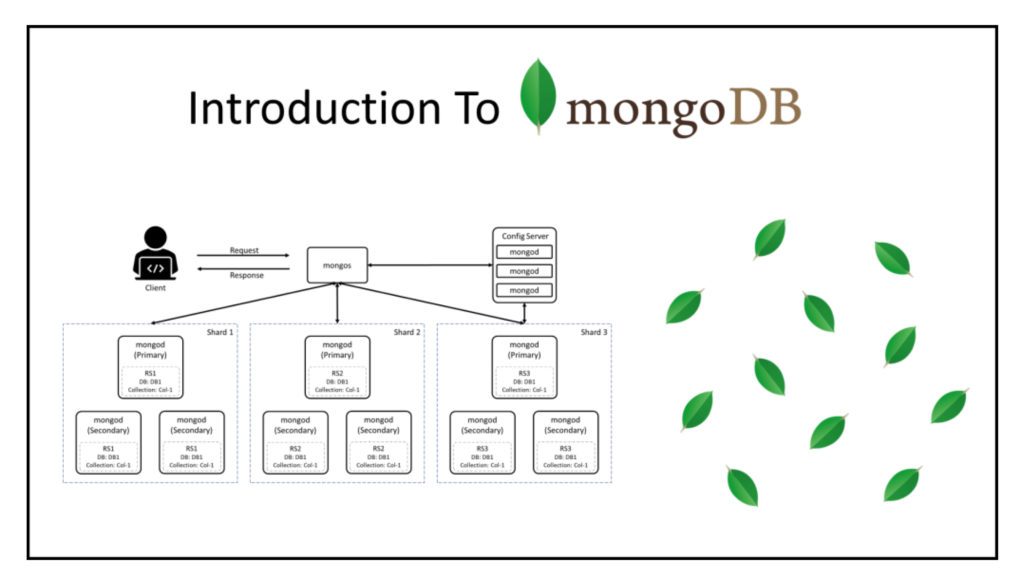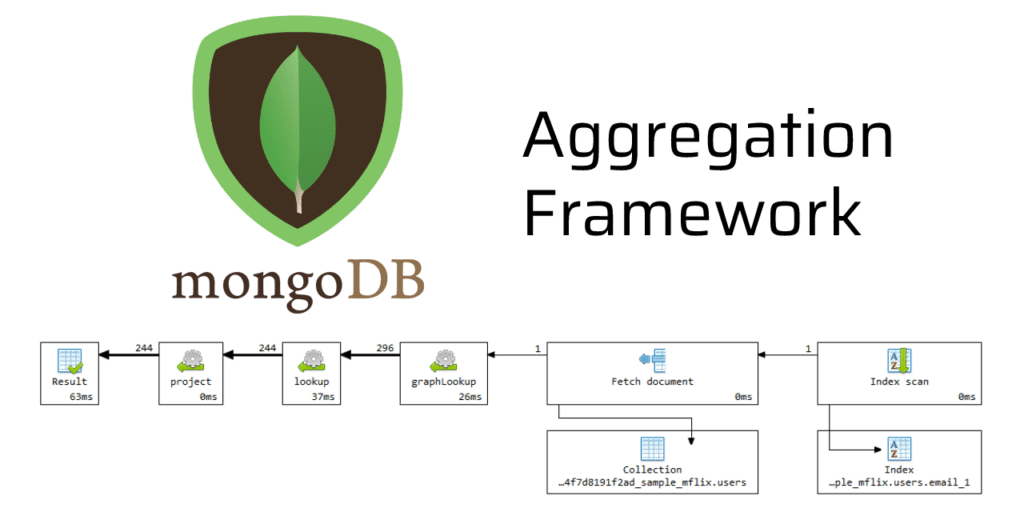Comparing Mongo DB and SQL to Supercharge Your Database Performance : Unleashing The Power TO Grow
Comparing Mongo DB and SQL to Supercharge Your Database Performance : Unleashing The Power TO Grow
SQL vs Mongo DB Introduction:
In the realm of software development, the database you choose can make or break your project. Selecting the right database management system (DBMS) is crucial as it directly impacts your application’s performance, scalability, and maintenance. Among the plethora of options available, two prominent players stand out: Structured Query Language and MongoDB.
Brief Introduction to SQL and MongoDB:
Structured Query Language, is one of the oldest and most widely used database management systems. It is a relational database management system (RDBMS) based on the relational model proposed by E.F. Codd in the 1970s. Structured Query Language databases organize data into structured tables with rows and columns and use a predefined schema to define the structure of the data.
On the other hand, MongoDB is a relatively newer player in the field. It is a NoSQL database, which means it doesn’t rely on the traditional tabular structure used by Structured Query Language databases. Instead, MongoDB stores data in flexible, JSON-like documents within collections. This document-oriented database is designed for flexibility, scalability, and performance.

Focus on Performance Comparison:
While both Structured Query Language and MongoDB have their merits, in this article, we will focus on comparing their performance. Performance is a critical factor in determining the efficiency and speed of your database operations. By understanding the performance characteristics of both Structured Query Language and MongoDB, you can make an informed decision about which database best suits your project’s requirements.
Structured Query Language Database Overview:
Structured Query Language databases are structured and based on a tabular model. They store data in tables, where each table consists of rows and columns. The schema of an Structured Query Language database defines the structure of the data, including the data types, constraints, and relationships between tables. SQL databases use a structured query language (SQL) for defining, querying, and manipulating data. Some popular SQL databases include MySQL, PostgreSQL, and Microsoft SQL Server.
Structured Query LanguageDatabase Overview
SQL (Structured Query Language) databases are relational databases that use tables to store data. They are based on a predefined schema, which defines the structure of the database, including the tables, data types, relationships, and constraints.
Structure:
In SQL databases, data is organized into tables. Each table consists of rows and columns, similar to a spreadsheet.
Tables:
Tables are used to store related data. Each row in a table represents a record, and each column represents a different attribute or field of the record. For example, in a database for an online store, you might have tables for customers, orders, and products.
Relationships:
SQL databases support relationships between tables. There are three main types of relationships:
- One-to-One: Each record in one table is related to exactly one record in another table.
- One-to-Many: Each record in one table can be related to one or more records in another table.
- Many-to-Many: Many records in one table are related to many records in another table.
Popular SQL Databases:
Some popular SQL databases include:
- MyStructured Query Language: An open-source relational database management system (RDBMS) owned by Oracle Corporation. MyStructured Query Language is widely used for web development and is known for its reliability, scalability, and ease of use.
- PostgreStructured Query Language: Another open-source RDBMS is known for its advanced features, extensibility, and standards compliance. Postgre Structured Query Language is highly regarded for its robustness and support for complex queries.
- Microsoft Structured Query Language Server: A relational database management system developed by Microsoft. It is known for its integration with other Microsoft products and its enterprise-level features such as scalability, security, and business intelligence.
MongoDB Overview
MongoDB is a No Structured Query Language database that uses a document-oriented data model. Instead of tables, MongoDB uses collections to store data. Each collection contains documents, which are JSON-like data structures that can vary in structure from one document to another.
Collections:
Collections are similar to tables in SQL databases, but they do not require a predefined schema. Documents within a collection can have different fields and data types, allowing for greater flexibility.
Key-Value Pairs:
Documents in MongoDB consist of key-value pairs. This flexible schema allows for easy storage and retrieval of complex data structures.
Scalability:
MongoDB is designed to scale horizontally, making it ideal for applications with large amounts of data and high throughput requirements. It can easily handle growing datasets by adding more servers to a MongoDB cluster.
Features:
MongoDB offers features such as ad hoc queries, indexing, replication, and load balancing, making it suitable for a wide range of use cases, including real-time analytics, content management, and mobile applications.
Popular MongoDB Features:
- Flexibility: MongoDB’s flexible schema allows for easy modification of data structures without downtime.
- High Performance: MongoDB’s document-based data model and distributed architecture provide high performance and scalability.
- Automatic Failover: MongoDB supports automatic failover and data redundancy through replica sets, ensuring high availability and data durability.
Overall, MongoDB offers a powerful and flexible alternative to traditional SQL databases, making it well-suited for modern web and mobile applications.

Performance Comparison
When it comes to database management systems, performance is paramount. Both SQL and MongoDB have their strengths and weaknesses in terms of speed, efficiency, and scalability. Let’s delve into a comparison of these aspects to help you make an informed decision for your project.
Speed and Efficiency:
SQL databases are known for their robustness and efficiency in handling complex queries, especially in scenarios where data relationships are well-defined and structured. With SQL, data is stored in tables with a fixed schema, allowing for faster query execution. However, the rigid structure of SQL databases can sometimes lead to slower performance when dealing with unstructured or semi-structured data.
On the other hand, MongoDB, being a NoSQL database, offers better performance in scenarios where flexibility and scalability are more critical than strict data consistency. MongoDB’s document-oriented model allows for faster data retrieval, especially when dealing with unstructured data. This makes MongoDB an excellent choice for applications with rapidly changing data requirements or those requiring real-time analytics.
Scenarios and Use Cases:
SQL databases excel in scenarios where data integrity and consistency are of utmost importance. Applications such as banking systems, e-commerce platforms, and ERP systems benefit from the ACID (Atomicity, Consistency, Isolation, Durability) properties offered by SQL databases. These systems require complex transactions and relational data models, making SQL databases the preferred choice.
On the other hand, MongoDB shines in scenarios where scalability and flexibility are prioritized. Applications such as content management systems, social media platforms, and real-time analytics benefit from MongoDB’s ability to handle large volumes of unstructured or semi-structured data efficiently. Additionally, MongoDB’s horizontal scalability makes it an excellent choice for applications experiencing rapid growth or requiring distributed databases.
In conclusion, while SQL databases offer superior performance in scenarios requiring complex queries and strict data consistency, MongoDB outperforms SQL in scenarios where scalability, flexibility, and speed of development are critical factors.
Scalability
Scalability is a crucial aspect of any database system, especially in today’s world where the volume of data generated is increasing at an unprecedented rate. When comparing the scalability of SQL and MongoDB, it’s essential to understand how each database system handles the increasing volume of data and the growing demands of users.
SQL databases typically follow a vertical scaling approach, which means that to handle an increase in workload or data volume, you need to upgrade the hardware of the server on which the database is hosted. This can involve upgrading to a more powerful server with increased CPU, RAM, or storage capacity. While this approach can provide a significant performance boost, it also comes with limitations in terms of cost and practicality. Additionally, there is a limit to how much you can scale vertically before hitting hardware limitations.
On the other hand, MongoDB follows a horizontal scaling approach, also known as sharding. With sharding, data is distributed across multiple servers, allowing the database to scale out horizontally as the data volume and workload increase. This means that instead of upgrading the hardware of a single server, you can simply add more servers to the database cluster to handle the increased load. MongoDB’s native support for sharding makes it easier to scale out horizontally compared to traditional SQL databases.
In terms of ease of scalability, MongoDB has a clear advantage over SQL databases. Adding more servers to a MongoDB cluster is relatively straightforward, and MongoDB’s built-in sharding capabilities make it easy to distribute data across multiple servers. In contrast, scaling a SQL database requires careful planning and may involve downtime during the hardware upgrade process. Overall, MongoDB’s horizontal scaling approach makes it a more scalable solution for large-scale applications with high data volumes and demanding workloads.
Flexibility and Schema
In traditional SQL databases, the schema is rigid and follows a predefined structure. Once the schema is defined, it’s challenging to alter it without affecting existing data. Adding or modifying a column requires altering the entire table, which can be a complex and time-consuming process.
On the other hand, MongoDB offers a flexible schema design. MongoDB is a document-based NoSQL database, which means each record can have its own unique structure. This flexibility allows developers to store different types of data in the same collection without a predefined schema.
In MongoDB, you can easily add or remove fields from documents without affecting other documents in the collection. There is no need to update the entire collection when modifying the schema, which makes the process much simpler and faster compared to SQL databases.
Additionally, MongoDB allows for dynamic schema evolution. This means that documents within a collection can have different fields, and new fields can be added to documents as needed without altering the entire collection’s schema. This flexibility is especially beneficial in agile development environments where requirements can change frequently.
However, while MongoDB’s flexible schema offers advantages in terms of development speed and agility, it also comes with some challenges. Since there is no predefined schema, it’s essential to carefully manage data consistency and validation within your application code. Without a predefined schema, it’s easier to introduce inconsistencies or errors in your data.
In summary, SQL databases offer a rigid schema structure that can be challenging to change once defined, while MongoDB provides a flexible schema design that allows for easier schema modifications without impacting existing data. The choice between SQL and MongoDB ultimately depends on your project’s requirements and the level of flexibility and scalability needed for your application.
Conclusion
n conclusion, both SQL and MongoDB offer unique advantages and are suitable for different scenarios depending on project requirements. Let’s summarize the key points discussed in this comparison and suggest which database might be the best fit for different scenarios.
Key Points Summary:
- SQL Database Overview:
- SQL databases follow a rigid schema structure with tables, rows, and relationships.
- They are best suited for applications with complex relationships and transactions, such as banking systems or e-commerce platforms.
- Popular SQL databases include MySQL, PostgreSQL, and SQLite.
- MongoDB Overview:
- MongoDB is a NoSQL database that uses a flexible schema with collections and documents.
- It is highly scalable and performs well with large amounts of unstructured or semi-structured data.
- MongoDB is ideal for applications with rapidly changing data requirements or large-scale data processing needs.
- Performance Comparison:
- SQL databases are known for their strong consistency and ACID compliance, making them suitable for applications that require strict data integrity and transactions.
- MongoDB, on the other hand, offers high performance and scalability, especially for read-heavy workloads and applications with large datasets.
- The choice between SQL and MongoDB depends on the specific performance requirements of the project.
- Scalability:
- SQL databases can be scaled vertically by adding more resources to the existing server, but horizontal scaling can be complex.
- MongoDB offers horizontal scalability out of the box, making it easier to distribute data across multiple servers or clusters as the application grows.
- Flexibility and Schema:
- SQL databases have a fixed schema that must be defined before data can be inserted, making it less flexible for applications with changing data requirements.
- MongoDB’s flexible schema allows for dynamic data structures, making it easier to adapt to evolving project needs without disrupting the application.
Best Fit for Different Scenarios:
- Choose SQL for:
- Applications with complex relationships and transactions.
- Projects that require strict data integrity and ACID compliance.
- Legacy systems or applications that rely on a well-established relational database model.
- Choose MongoDB for:
- Applications with large amounts of unstructured or semi-structured data.
- Projects that require high scalability and performance, especially for read-heavy workloads.
- Rapidly evolving projects with changing data requirements.
Encouragement to Make an Informed Decision:
When choosing between SQL and MongoDB, it’s essential to evaluate your project’s specific requirements and consider factors such as data structure, scalability, performance, and flexibility. Take the time to assess the needs of your application and make an informed decision based on these requirements.
Remember, there is no one-size-fits-all solution, and the best choice ultimately depends on the unique characteristics of your project. By understanding the strengths and weaknesses of both SQL and MongoDB, you can select the database that best aligns with your project’s goals and objectives, ensuring optimal performance and scalability in the long run.


